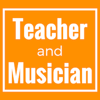Online sequencers
When it comes to music technology, I often find myself pulled in two very different directions. I love the idea of ultra-portable, lightweight devices that pull their processing power from the cloud, I owned a Chromebook for a while and loved it. Pulling in the other direction, however, is my ongoing desire to use the latest and greatest gear. There’s nothing quite like using a maxed out machine running amazing music software. It’s this last point that causes me to lean towards the more powerful machines – the cloud isn’t quite ready for music making.
That’s not to say that there’s a complete lack of choice in this respect. For music teachers, there are two strong cloud based sequencers worthy of investigation – Soundation and Soundtrap.
Both packages work entirely in your browser, meaning that there’s no software to install and granting you access to a good range of virtual instruments, effects and an impressive range of loops. It should be noted that Soundation requires Adobe Flash to run, which means that it won’t even attempt to run on an iPad or iPhone. Soundtrap on the other hand, runs using HTML5, enabling this option to run a basic version of iOS. The HTML5 experience also feels that much more responsive when running on less powerful machines, which may be a consideration for school music departments. It should also be noted that Soundtrap insists that you’re running Google Chrome as your web browser since the audio implementation is somewhat more advanced than with other desktop browsers.
The basic operation of each package should be familiar to anyone who has used a desktop sequencer before. Both feature an arrange windows style editor and allow for audio and MIDI editing. Soundation appears to be trying to replicate the environment of a traditional DAW, such as Pro Tools or Logic whereas Soundtrap feels quite reminiscent of GarageBand for iPad.
In operation, the responsiveness of HTML5 in Chrome does seem to give Soundtrap the advantage. On a Mac, there’s pretty convincing software monitoring of the input signal, allowing you to hear yourself as you record (limitations in the way Windows handles sound means that you’ll have to use the monitor feature on your audio interface to achieve the same result). Both packages offer a reasonable selection of software instruments but it should be mentioned that Soundtrap has a very visual approach and good use of ‘musical typing’, which allows you to use your computer keyboard to play the sounds.In terms of integration into your school, then it’s safe to say that Soundation is that bit further along thanks to its partnership with MusicFirst and their VLE designed to support their suite of cloud based music teaching resources. Schools using Google Apps for Education, however, may find that Soundtrap’s inclusion of Google+ login goes some way to making up for this. I’ve contacted Soundtrap to ask for more details about their school-centred solutions and I’ll post an update when I hear back from them.
While neither Soundation nor Soundtrap are really ready to replace your music technology solutions for GCSE or A-Level, both offer compelling options for schools wanting low-cost yet accessible ways for pupils to have access to a sequencer. While the time of the cloud based sequencer might not be entirely here, it’s certainly on the horizon.

